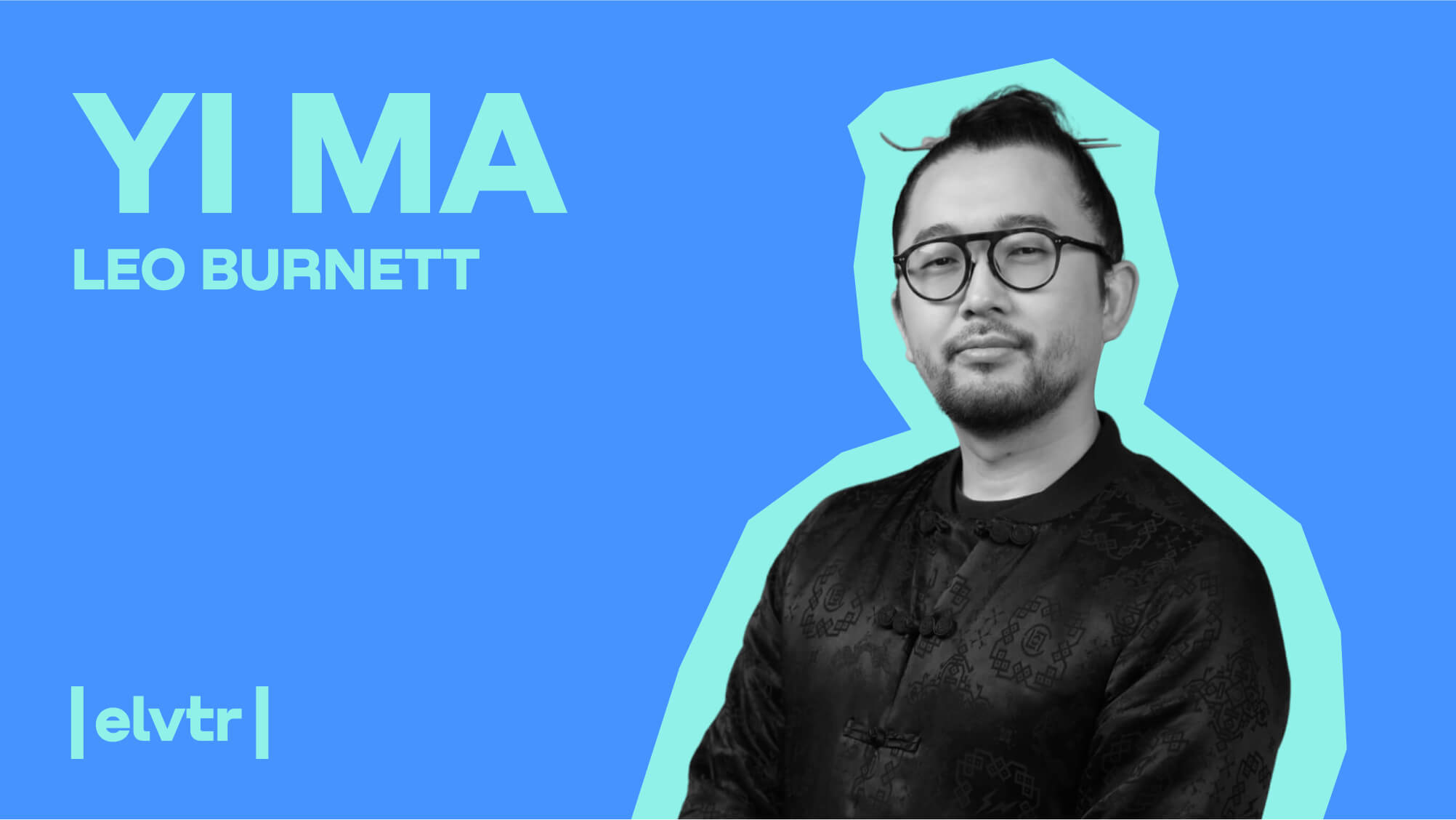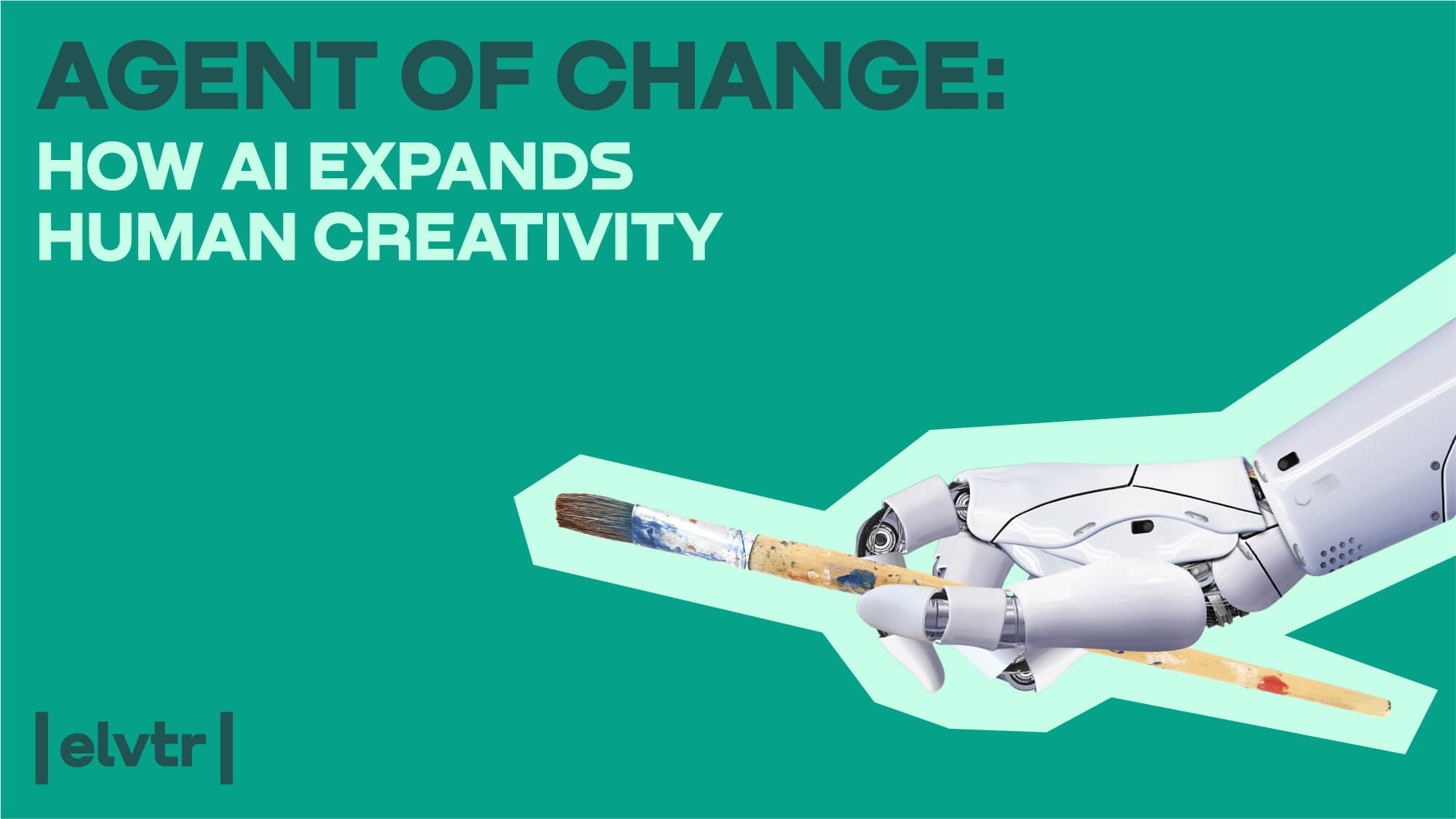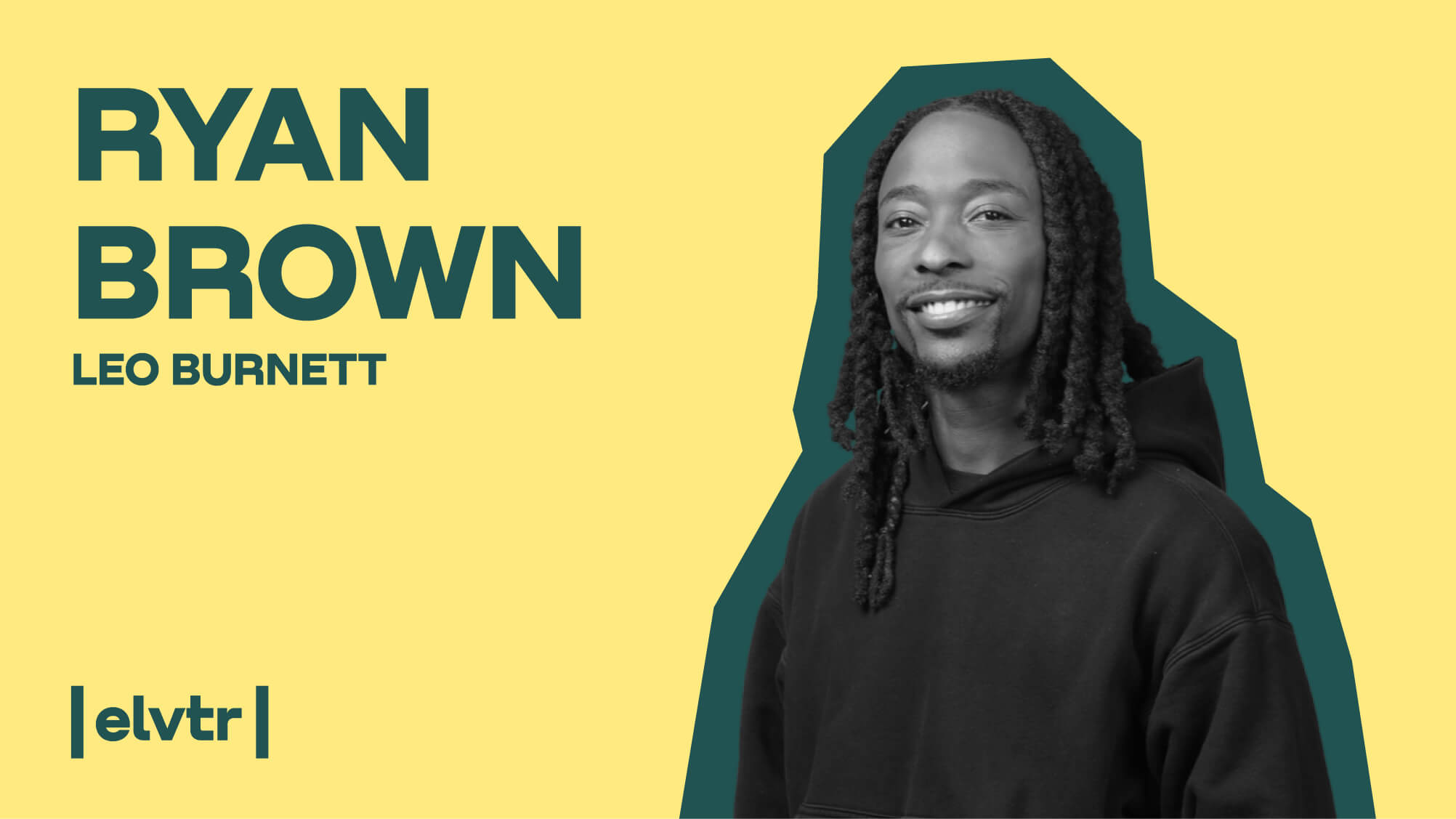- MAIN PAGE
- – elvtr magazine – LEO BURNETT CREATIVE DIRECTOR YI MA: “YOU WANT TO BE A GREAT ADVERTISER? LIVE AND BREATHE CULTURE!”
LEO BURNETT CREATIVE DIRECTOR YI MA: “YOU WANT TO BE A GREAT ADVERTISER? LIVE AND BREATHE CULTURE!”

Yi Ma is not your conventional advertiser. Having the distinction of being the first creative director of Chinese origin at a big US agency, he’s now keen on helping more people from diverse backgrounds to break into advertising. The list of his clients at Leo Burnett speaks for itself: Samsung, McDonald's, ComEd and others. A hip-hop dancer, graffiti artist and one of the organisers of community events such as Hip Hop in Chinatown, Ma knows how to keep his creative flame alive.
In the following Q&A, Ma shares his thoughts on what makes the job of a creative director equally challenging and thrilling, the skills he looks for in new hires, the cultural differences between US and Chinese advertising, and why AI has already beaten us.
What attracted you to advertising?
I didn't learn advertising in school. I was studying economics, but I changed my Major to art and got into graphic design. Then I got an internship as a junior art director at Leo Burnett, which was already a second-level job. I went to a really small liberal arts school in Kansas, so this internship was my golden ticket to the big city.
Being an immigrant, I wasn't good at communication, which is basic in advertising. During the internship, besides what interns do, like making coffee, I was asking for more work. If senior people showed up with three options at meetings, I would show up with twenty. That's how I got into advertising.
I didn't know what an art director did at the time, I would just do more design to get into the field. Then I learned how to come up with ideas and work with other people so that we can get results quicker. You come up with creative solutions that make your account people happy.
Is that what still motivates you, the creativity?
Definitely. It's a job like no other. Every day a new challenge appears, like a reset. It’s not like I am building this giant machine over and over again. There is always a new problem that you have to solve in a way that creates more value for customers.
What are the pros and cons of working for a big agency like Leo Burnett?
Working for a big agency means that you set the trends in the US advertising industry. The con part is that sometimes you feel like a little gear within the big machine. The agency has so many offices and employees. Coming from a minority within advertising, you're pretty much the smaller gear.
But even a small gear can have a big impact. That's what advertising is about: using creativity to create more impact. Minorities are a growing part of the consumer base. So that’s our time to shine. You might be a small fish in a pond, but you can make a name for yourself. Bigger fish are looking for you, trying to catch the new talent.
Is it like Mad Men, with a lot of politics but also creative freedom and occasional fun?
There is a rumour that one of the Mad Men copywriters actually worked on my floor and my account. The main character was inspired by someone who worked on my account. Even the office and the politics in the show, that's all based on my floor. I talked to the elders who worked on my floor and they said that’s how it was. Now it’s different of course.
How does your Asian American background feed into your work?
America is a melting pot, brewing new cultures. After 12 years at Leo Burnett, I am still the only Chinese immigrant creative director within big 4A’s agencies across America. If they promote me to vice president, I will be the first ever Chinese creative vice president in US advertising.
That shows that for people like me, you can thrive because you are leading the pack. There's nobody ahead of you. That's not right or wrong. It's more about “Hey, I'm here to lead and bring other people up.”
That's why I created an organisation called “AZNCY”, an agency within Leo Burnett that focuses on Asia as a cultural exchange and employee resource group. I was also working with an immigrant organisation called “Cross-Boundary”. Being an immigrant, I am considered a “legal alien”. So I created an organisation to represent this group and give people like us a voice.
What are the differences in how American and Chinese brands approach advertising?
The channels are different. The US market is global, brands have a global outlook. So the US market is competitive globally, but brands here move more steadily and slowly. They pay more attention to branding, the message and how that passes through all the channels globally.
The Chinese approach is more about short-term returns. Competition is fiercer than in America, because their product is only selling within China. It’s more about “How do I get this product out there?” How do I push through the channels? How do I make the sale, rather than focusing on branding.
Recommended courses
What challenges does a Leo Burnett creative director face when working with multiple partners, from the client to copywriters?
Being a creative director is more about managing. You have to be good at delegating and have a sense of teamwork. I'm right at the centre of the workload, working with partners, creatives, executives, new hires, clients, everyone. You're at the centre of making things happen, so you have to delegate. Even with the client, you have to think “What could the client do for the project?”
I make sure that the outcome ultimately creates the most value for the consumers and the brand. So I'm not there to manage people to make something, but to utilise resources for advertising to produce itself. When you delegate, you have to deal with expectations and timelines. You have to forget about creativity. You need to stop executing. You have to delegate parts that you're not good at to other people.
It’s easy to say yes to things you don't understand. But you need to learn how to say no. Because it's about the most efficient way to use resources. You can’t understand somebody else's needs and what value they provide. You have to ask them about it and occasionally say no.
How do you keep the creative flame burning?
For a creative director to harness artists, you have to be self-sufficient and proactive. No matter what your title is, you have to be at the back of the wolf pack. I have trust in my team. We come up with the direction of the vision together, where we're going and how to get there. But I make sure everybody's on board. If anybody's falling behind, I will be there. So I provide security for my team to thrive.
I don’t need to show my leadership. I am self-sufficient. I keep learning about the industry and broader culture. I do dance, graffiti, art, I make clothes, I keep up with all new things. That makes people realise I am the leader and that we should learn from each other.
I share this stuff with them. I'll take my team out to check out a new art show or my show, a dance battle, or I take them to Chinatown to eat. The more you get exposed to something, the more you feel like you're passionate about it. That's how you keep your own passion and creativity going.
Being proactive is important, because in advertising you face ups and downs. Instead of talking in circles during a meeting, you talk about the solution, even if it might not be as good as expected.
You are a popping dancer and ABS graffiti crew member – how does this artistic side of yours feed into your work as a creative director?
I was bad at studying and didn't really like the education system. So I went down the route of self-expression through hip hop, graffiti, dance, but never thought these could be part of my professional life.
But that's a part of being an advertiser. You have to know the culture, what's going on out there. You have to experience it, because your client may be making a product within that culture or for people in that culture, or using influencers to inspire other people.
So it was a plus for my company that I have this background. I throw parties locally. I help bring communities together, I organize night markets, clothing collaborations etc. I create these things out of nowhere, using my knowledge, friends, community. That keeps my creativity going.
And that’s what advertisers sometimes do these days. Not just traditional advertising, but pop-ups, online streaming, TikTok, sociable things. You have to know what's out there, the art world, copyright issues, community building. A brand is part of a culture. I'm in the culture, so it’s easier for me to understand it and help the client.
What recent advertising campaigns have changed the rules of the game?
Toms, the shoe brand. The way they created their product, their brand, they already have advertising built in there. So when you buy their shoes, a kid gets another pair. The product sells itself. Advertising isn’t even necessary.
If you think about your brand in a way that matters for customers and creates value, including for the people your consumer cares about, that itself is already an advertising machine. But you need to have that thinking built in authentically, because it’s not just a campaign to sell something.
This is why Leo Burnett is not just trying to create ads, but actions. We change consumers’ behaviour. With Toms, you're not only buying the shoes for yourself, you also buy shoes for this kid in the developing world, so you change things a little bit. Toms started that and it changed advertising.
Leo Burnett’s homepage states: "The most creative, most effective and most powerful work has people at its core–their needs, wants, dreams and hopes. Today, we call this belief HumanKind." So what’s HumanKind?
HumanKind is our operating system. We have this thing called the four C's.
- Eyes of a Child: you have to be human and care about people and be curious.
- The heart of a Champion: you have to act bravely.
- Hands of a Craftsman: you have to make things and keep improving them.
- The soul of a Citizen: respect the work and do the right thing, because you're part of the country.
Those four things are our guide to producing great advertisements.
We let people participate and then their behaviour changes. We evaluate this on a scale from 1 to 10. If you make it to number eight, your acts have made an impact through your advertising or people having an impact on the consumer. 9 or 10, that's even better. We use this scale for HumanKind to evaluate our work.
What skills do you look for in candidates?
It’s a big agency, so I interview just three out of many candidates. One thing I look for is how they articulate their work. Advertising is all about communication. Nobody will be there to tell you how to look at this piece of advertising. So that has to be clearly communicated in an entertaining way.
I look at their website or their portfolio to see if this person has that skill. Not just their advertising work, but the way they articulate their work. That’s how I distinguish director-level people from mere executors.
The other thing I look for is teamwork. You want somebody who can dive right into the team. Today you're getting more work with less time. So can this person work with my team? Can I work with them? Do we have this mutual understanding? Are they okay with the work we're doing? What’s their way to solve problems? These are the criteria.
What’s the role of AI in modern advertising?
Those tools have been there for years, but only started this year to peak up globally. Even in an industry like advertising that needs to keep up with all new things, we cannot use those open-source tools for the client. There's a lot of copyright issues.
Internally, we can use the tools to generate ideas, to make text look better or quicker or use it to sell the ideas. But once we pass that stage, we can't really leverage it unless it's for production where we work with artists or people who are doing the regenerative stuff. So that's where it currently is. Personally, I use them daily.
YOU WOULD LIKE THIS ARTICLE:

Agent Of Change: How AI Expands Human Creativity
Collaborative Possibilities Between Artists, Designers, and AI.
In a weird way, it’s like the movie Terminator where the AI takes over the planet and controls humans. I think we have already lost. AI has already taken over. We just don't know it yet. So we might as well learn how to use it better. Again, being proactive, you have to understand AI and utilise it as a tool.
What’s the last task you assigned to ChatGPT?
It was for a personal project. I used an AI voice generator for two videos. My American friend was speaking in English in a video about Chinese street culture and I turned that into Chinese voice-over with AI. For the other video, I used an AI tool to translate an English script into Chinese words, and then I gave it to my Chinese friend to do the voice-over in Chinese. Then I translated Chinese back into English, so my friend in America was speaking Chinese and my Chinese friend was speaking English. At the end of the day, the script and voice-over were so believable that everyone thought those two had learned new languages.


